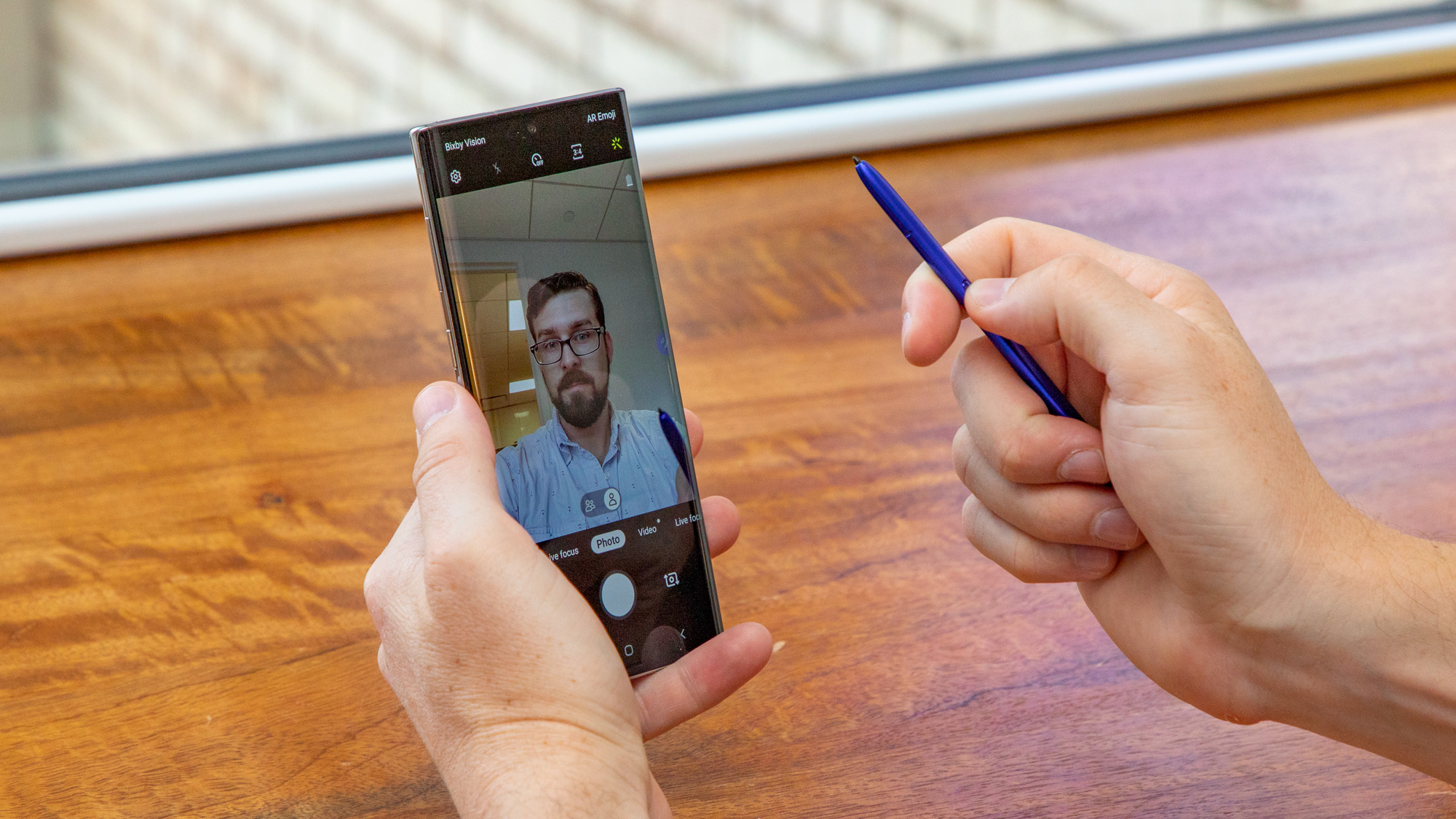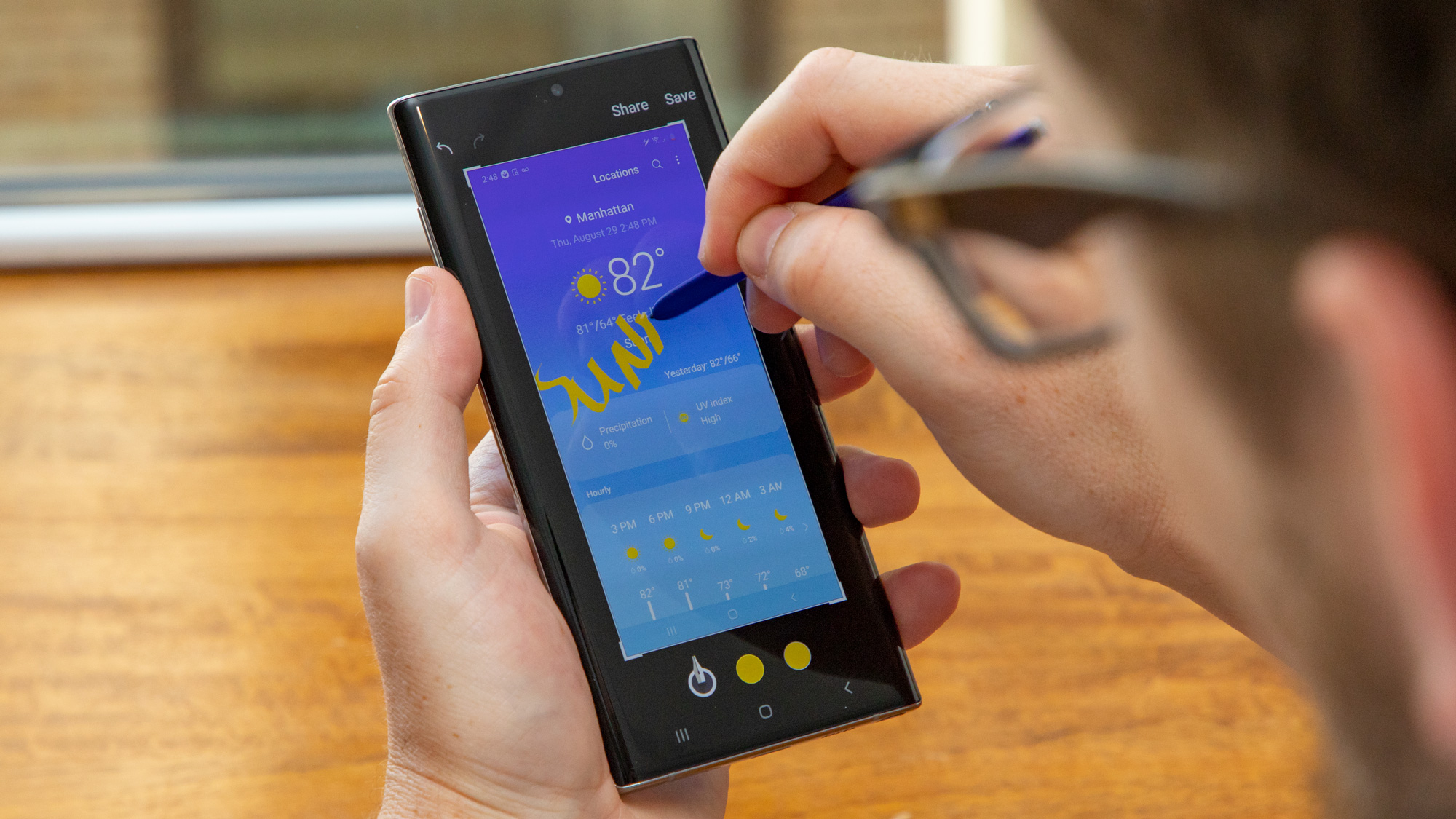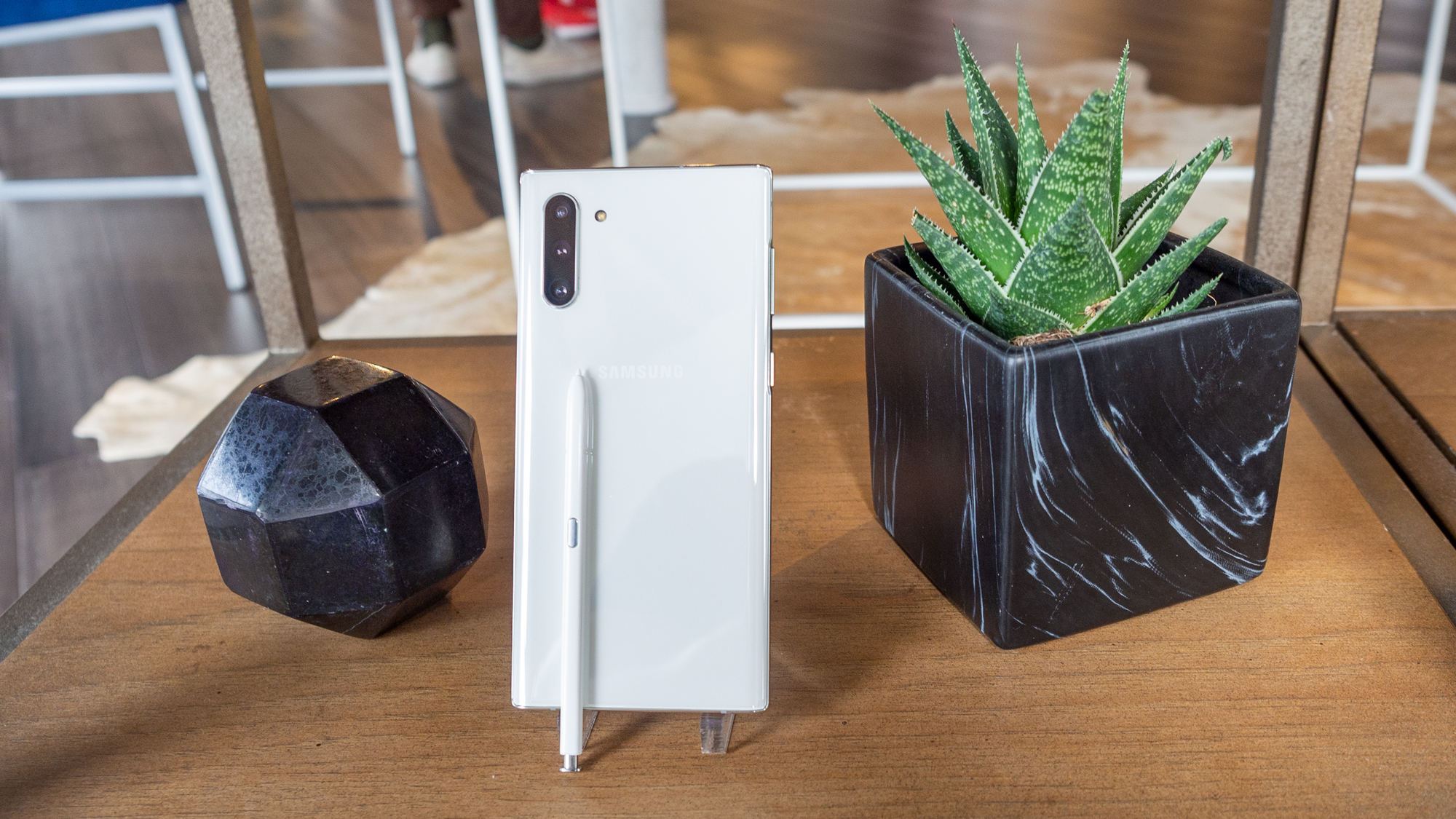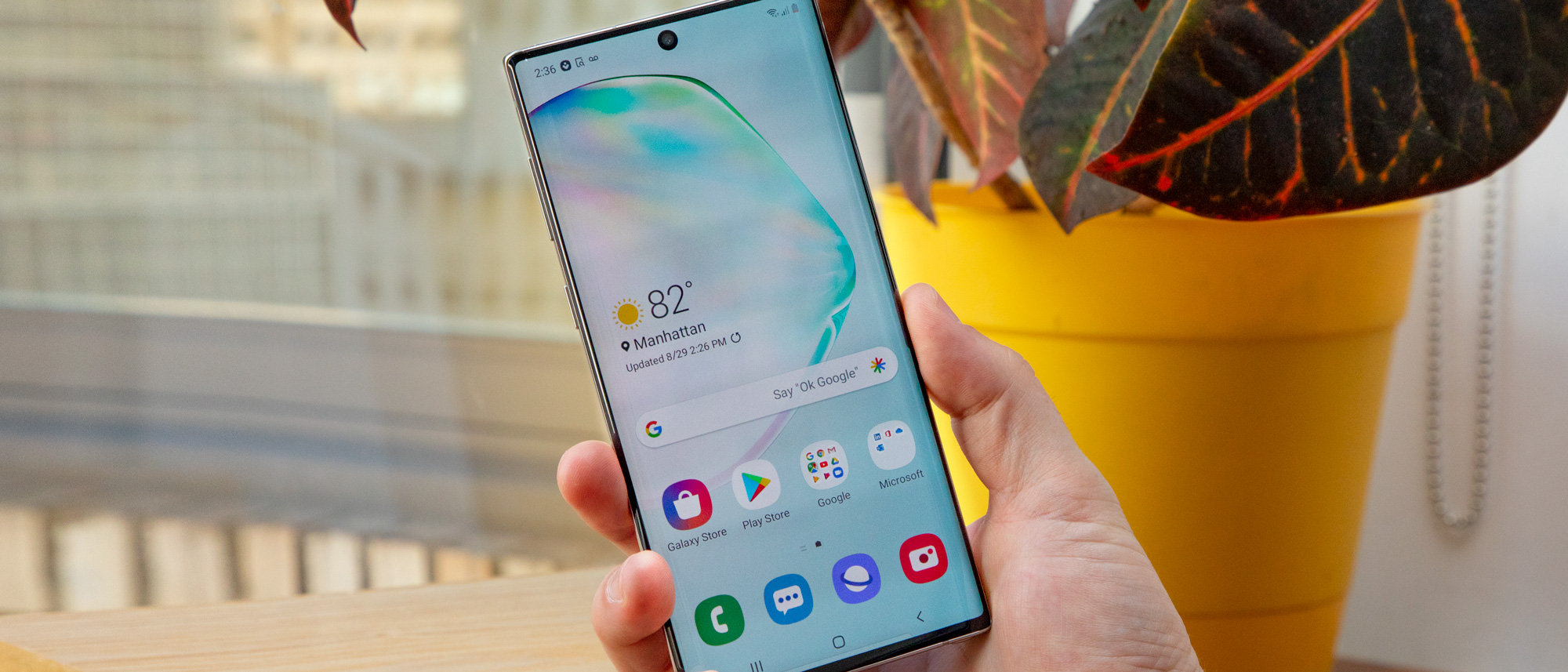Why you can trust TechRadar
S Pen stylus
There aren’t many phones on the market with a stylus attached. In fact, the Galaxy Note range is your only real option if you need that.
The stylus on the Note range of handsets has been refined over the years since the original phone in 2011, making for an impressive experience that can offer a lot of extra functionality on your phone.
The S Pen - that’s Samsung’s name for the stylus - slots into a hole on the bottom edge of the phone, on the far right hand side. Pressing on the stylus will pop it out, and it can be put in either way, so you won’t accidentally jam it in the phone.
The stylus itself is light and easy to use. The screen technology used here by Samsung also allows for a variety of pressure levels, allowing you to create some impressive designs with the pen or just take notes.
For example, one standout feature is the fact you can just take notes on the screen without having to turn it on properly. This is useful in meetings when you need to quickly scribble something down and you don’t want to have to move through a variety of menus.


Since the Note 9, the pen has also been Bluetooth-connected, allowing you to have a variety of features on the pen. For example, you can use the button on the side of the pen to take a group shot photo when you’re away from your phone.
It’s a useful little extra that you’re unlikely to find yourself using daily, but will be glad to have on occasion.
For the Note 10 range, Samsung has also brought a variety of gesture controls to the pen. These allow you to control certain apps, such as the camera, video or gallery, by moving the S Pen in different directions.
This is currently just for Samsung’s own apps, so the functionality is quite limited. If you’re showing off your photo gallery, you may find it easy to flick through a gallery with the S Pen in hand, but it’s difficult to remember that functionality exists when you can just cycle through the gallery with your finger on the display.
The company is allowing third-party app developers to access this feature, so we may see third-party applications begin to use it in the coming months too.
Interface and reliability
Samsung’s interface doesn’t look exactly like the raw Google Android software, but it has an attractive design that’s easy to use for the average person if they’ve had an Android phone before.
It’s called Samsung One UI, and we find it easy to navigate around the phone while using the variety of apps Samsung has chosen to include.
There isn’t much pre-loaded on the phone, so aside from the standard Google apps and a small selection of Samsung ones, you’ll have to download a few from either Samsung’s Galaxy Store, or the more likely choice of the Google Play Store.
As we’ve spoken about, the S Pen is another way to interact with your device and as soon as you bring the stylus out of its holster you’ll be greeted with a series of options that allow you to quickly access stylus functionality.
These include options like ‘AR Doodle’ and ‘Create Note’, or if you just want to use the stylus on standard apps it’s easy enough to dismiss these shortcuts.
Samsung DeX is a relatively recent addition to Samsung’s phones, and it allows you to attach your phone to a computer monitor using the USB-C port at the bottom of your handset.
You’ll then be able to use Bluetooth-connected accessories to interact with your phone like a computer. We’ve yet to use this on the Samsung Galaxy Note 10, but we hope to be able to try out the functionality soon.
You can read about how it works on a slightly different device in our Samsung Galaxy Note 10 Plus review.
Performance and specs

Those in the US will have access to the Qualcomm Snapdragon 855 chipset inside their phone. If you're in the UK (and other countries around the world) you'll get the newer Exynos 9825 chipset, which is built using 7nm EUV technology.
This is Samsung’s newest flagship chipset and it’s both smaller and more efficient than its predecessor. In benchmarking tests, we found the Snapdragon 855 version of the phone scored 11,167 in Geekbench 4.
That was even better than the score of 10,849 that we saw on the Galaxy Note 10 Plus.
The Samsung Galaxy Note 10 is packing 8GB of RAM, and it’s only available with 256GB of storage – there’s no microSD support, and Samsung says this is to help keep the literal size of the device down.
That’s plenty of space for the average user, but if you want more you’ll have to opt for the Note 10 Plus, which comes with up to 512GB of built-in storage as well as microSD support.
Another feature that’s been dropped in the effort to keep the Note 10 slim is the 3.5mm headphone jack. This is the first time Samsung has dropped the jack from its top-end phones, and some will be unhappy with the decision.
You’ll be able to use the USB-C port at the bottom of the phone for certain headphones (including a pair in the box), but it may mean you’ll have to replace some of the cables you currently use.
Looking for a phone with 5G support? The Galaxy Note 10 isn’t it – you’ll have to opt for a more expensive 5G version of the Galaxy Note 10 Plus to be able to get that.
That’s a bit of a shame considering the Galaxy Note 10 is so expensive, and it would be useful if Samsung had made this phone a bit more future-proof in an effort to keep it as one of the top Samsung handsets.
Current page: What’s it like to use?
Prev Page Camera and battery life Next Page Verdict and competitionJames is the Editor-in-Chief at Android Police. Previously, he was Senior Phones Editor for TechRadar, and he has covered smartphones and the mobile space for the best part of a decade bringing you news on all the big announcements from top manufacturers making mobile phones and other portable gadgets. James is often testing out and reviewing the latest and greatest mobile phones, smartwatches, tablets, virtual reality headsets, fitness trackers and more. He once fell over.

